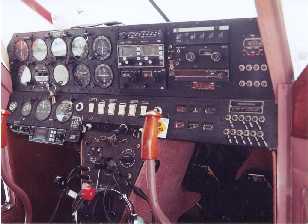
IIIIIIIIIIIIIIIIIIIII Home of the TEAM BD-4 Quick Build Kit
![]()
![]()
The TEAM Aviation BD-4
The BD-4’s aerodynamic and design philosophy is solidly based on flight tests and more than thirty-nine year’s experience with the BD-4 aircraft. The BD-4 was first introduced in 1968 at the EAA Rockford Air show. It was actually the first modern home-built aircraft to be offered in kit form. The TEAM BD-4 features simplified construction, improved performance and introduces new features that lower the cost of this light plane.
The wing design uses a simple tubular spar. In the original prototype design, the wing panels were constructed of a patented fiberglass panel rib. Although at first this appeared to be a breakthrough in construction, the fiberglass fabrication industry of 1968 was not prepared to meet the quality required by homebuilt airplanes. Although the "Panel Rib" method improved wing construction over the use of traditional ribs, it was lacking in fuel containment capability. For our new BD-4 wing production, we kept the best of the original design and added a few completely new approaches. The new wing uses the original tubular spar, but now incorporates a conventional metal rib and skin bonded to and mechanically fastened to the spar.
The BD-4 General Description
The BD-4 is a relatively low cost, high performance metal airplane. It has been designed for comparatively rapid, easy, do-it-yourself construction by enthusiasts with only simple shop tools and no previous aircraft fabricating experience. The BD-4 may be built as either a two or four place aircraft.

The clean, single engine, high wing BD-4 has been engineered to combine extreme building ease, maximum high speed cruise performance, relatively docile low speed handling characteristics and the lowest possible construction and operating expenses. Additionally, the BD-4’s instrument panel has more than enough space for a full IFR system
On first thought, it may seem that we are expecting a lot from one little flying machine. However, as we begin to examine the airplane, we see that what is best for one objective is usually best for all the others as well. For instance, the BD-4’s constant chord wing with no dihedral and no twist is quite efficient, is inexpensive to maintain and lends itself ideally to a ‘slab-sided’ fuselage. The BD-4 is also roomy inside, yet small and sleek outside, contributing both stability and lift to the airplane’s performance, and making it quite simple and straight forward to build.
Although the BD-4 was engineered to meet or exceed the structural requirements for certified aircraft as specified by the FAA in FAR - Part 23, it is not certified and is intended only for construction and operation as an amateur built airplane.
During the design of the BD-4, every possible effort was made to find the best, suitable material for each component in the airplane. Under no circumstances was strength sacrificed (the two place 1550 pound gross weight BD-4, in fact, is stressed for 9 G’s positive and negative). If several methods met a particular load requirement, the most reliable method was chosen. This philosophy was applied to everything from the BD-4’s wing to the elevator trim tab control system. If we could have found a safer way to build any component, we would have used it.
Every effort was also made, during the engineering of the BD-4, to specify only materials and sizes that are readily available from supply houses in the United States, Canada, and whenever possible, other parts of the world. This was done, of course, to make the construction of your BD-4 as convenient as possible. In very few cases, such as the landing gear and the tubular wing spars, was it necessary to go to a specially designed part.
